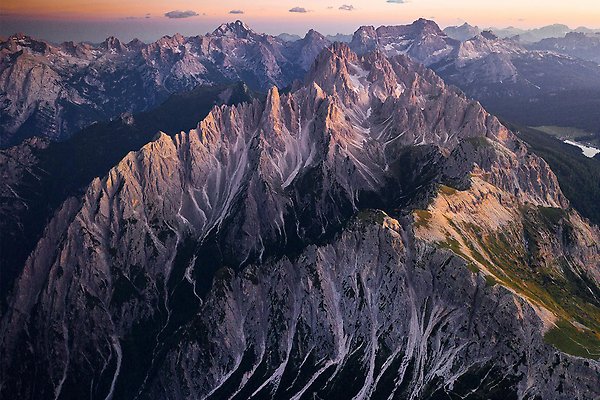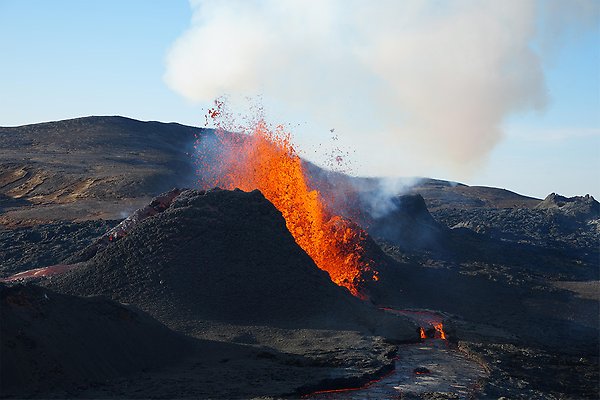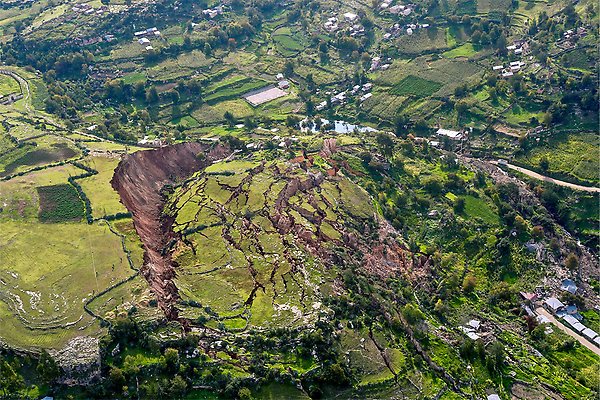Mineralogy, Petrology and Tectonics
%20(3)%20pyrite-345637.jpg)
In the program of Mineralogy, Petrology, and Tectonics, we research the fundamental processes within the planet Earth from its surface down to the deep interior. Our research areas are closely interconnected to comprehend the complex chemical and physical processes occurring on spatial scales from nanometers to thousands of kilometers, and on timescales ranging from seconds to millions of years. These spatial-dynamic links enable a broad application of our research, including topic of high societal impact.
Description
In Mineralogy we study minerals, their occurrence, distribution and formation, with emphasis on deposits of rare and critical metals, including the rare earth elements. We use field as well as laboratory based studies on Swedish and international deposits and mineralisations. Moreover, we docus on basic research on mineral transformations and properties in the Earth’s interior with implications for mantle mineralogical models and technological applications.
In Petrology we examine the composition, texture, and origins of rocks in various tectonic settings ranging from subduction zones and continental collision zones to continental rifting and intraplate volcanism. One of our main focus areas is the extraction of critical elements from ore deposits and investigation of the pressure-temperature-time evolution of orogenies and volcanism throughout Earth's geological past.
In Tectonics and structural geology we study the dynamics of the Earth’s crust and deformation of geomaterials. We focus on the dynamics of mountain building and its link to the formation of ore deposits, earth quake distribution, as well as magma transport, storage and their link to geothermal energy and volcanic hazards.
Our Research
Geodynamics and crustal deformation
Our research aims to understand large- and small-scale tectonic processes through both field observations and modelling. We mainly target mountain building in compressional regimes, as well as its links with the formation of ore deposits and salt tectonics. We combine geological and geophysical data, as well as cutting-edge mineralogical and petrological methods to derive a holistic picture of the geological history and processes of the oldest continents and younger mountain belts, such as the Caledonides and the Zagros Mountains. Moreover, we use analogue modelling to simulate the evolution of mountain belts and other tectonic settings. Numerical modelling is used to elucidate tectonothermal histories of rocks and deep circulation of chemical compounds in orogenic systems. The results of our research have important implications for identifying and extracting ore deposits and safely storing hazardous waste.

Earth’s Mantle Mineralogy and Geochemistry
The mantle is an important reservoir of silicates, metals, sulphur, volatiles and heat, which are transferred to the crust by volcanoes at divergent and convergent plate margins and also in intraplate settings.
Trace element and isotope geochemistry of lavas from Ocean Islands allow us to investigate the nature and origin of mantle heterogeneity, partial melting processes and melt-mantle interactions.
Research within experimental mineralogy seeks to obtain information on properties of Earth’s materials under extreme pressure and temperatures. Using diamond anvil technique and laser heating, in situ HP-HT experiments are conducted; simulating conditions of the Earth’s deep interior. Applying conventional and synchrotron X-rays, and a range of optical spectroscopic techniques, physicochemical properties such as phase transitions, magnetism, thermal and electric conductivities are determined and used in geophysical and geochemical models. Research interests extend from pressure- and temperature-induced phase transformations of mantle oxides and silicates to crustal mineral-fluid interactions.

Mineral resources for a changing society
We conduct research on different types of mineral deposits containing strategic and critical metals important for the ongoing energy transition. We study ore-forming processes, the significance of host rocks and how mineralization is affected by subsequent deformation and metamorphism. Through experimental mineralogy, we synthesize crystals that selectively enrich rare earth elements, and together with other stakeholders we are involved in the development of innovative exploration methods.
%20(2)%20IMG_0862mod.jpg)
Volcanic and Igneous Plumbing systems
We study how magma is transported, stored, and evolves in the Earth’s crust in different volcanic settings, such as Ocean Islands, mid-ocean ridges, subduction zones, and continental rift zones. Here, we use petrological and geochemical analyses to trace the magma from its source through the plumbing system to eruption. In addition, we study deformation related to the movement and storage of magma in the Earth’s crust and the interaction between tectonic and magmatic processes. The results help to better understand volcanic hazrads, the formation of ore deposits in volcanic environments and improve our understanding of geothermal resources.
%20(3)%20lava.jpg)
Natural hazards
Our research aims to understand natural hazards and the mechanism behind them, in particular volcanic hazards and landslides. Our research on magmatic processes helps to improve the interpretation of monitoring signals from active volcanoes and contributes to more precise forecasting of volcanic eruptions. Our research results also apply to understand landslides in general and Sweden in particular, and the link to climate change.

PhD Studies
According to international evaluations, Uppsala University has some of the most comprehensive research in geosciences in Europe, and our doctoral students at Uppsala University are among the most satisfied with their doctoral education. We offer doctoral studies in eight research areas.
Read more about our PhD Studies.
Publications
A review of the Caledonian Wilson cycle from a North Atlantic perspective
Part of Journal of the Geological Society, 2024
- DOI for A review of the Caledonian Wilson cycle from a North Atlantic perspective
- Download full text (pdf) of A review of the Caledonian Wilson cycle from a North Atlantic perspective
Part of Chemical Geology, 2024
Part of Journal of Metamorphic Geology, p. 225-255, 2024
- DOI for Disruption of a high-pressure unit during exhumation: Example of the Cycladic Blueschist unit (Thera, Ios and Naxos islands, Greece)
- Download full text (pdf) of Disruption of a high-pressure unit during exhumation: Example of the Cycladic Blueschist unit (Thera, Ios and Naxos islands, Greece)
Part of Science of the Total Environment, 2024
Part of Polyhedron, 2024
Part of International journal of earth sciences, p. 319-333, 2024
- DOI for In situ white mica Rb/Sr geochronology of the Leszczyniec metaigneous complex, West Sudetes: evidence of upper plate deformation at the onset of Variscan collision
- Download full text (pdf) of In situ white mica Rb/Sr geochronology of the Leszczyniec metaigneous complex, West Sudetes: evidence of upper plate deformation at the onset of Variscan collision
Part of International Journal of Applied Earth Observation and Geoinformation, 2024
- DOI for Mapping and understanding Earth: Open access to digital geoscience data and knowledge supports societal needs and UN sustainable development goals
- Download full text (pdf) of Mapping and understanding Earth: Open access to digital geoscience data and knowledge supports societal needs and UN sustainable development goals
Stratigraphy and structure of Chachahuén volcanic complex, southern Mendoza province, Argentina
Part of Journal of South American Earth Sciences, 2024
- DOI for Stratigraphy and structure of Chachahuén volcanic complex, southern Mendoza province, Argentina
- Download full text (pdf) of Stratigraphy and structure of Chachahuén volcanic complex, southern Mendoza province, Argentina
Transport of Magma in Granitic Mush Systems; an Example From the Götemar Pluton, Sweden
Part of Geochemistry Geophysics Geosystems, 2024
2024
Volcanic unrest as seen from the magmatic source: Reyðarártindur pluton, Iceland
Part of Scientific Reports, 2024
Part of Journal of Metamorphic Geology, p. 1143-1166, 2023
Part of Terra Nova, 2023
Part of Journal of the Geological Society, 2023
- DOI for Cambrian ages for metavolcanic rocks in the Lower Köli Nappes, Swedish Caledonides: implications for the status of the Virisen arc terrane
- Download full text (pdf) of Cambrian ages for metavolcanic rocks in the Lower Köli Nappes, Swedish Caledonides: implications for the status of the Virisen arc terrane
Part of Journal of Metamorphic Geology, p. 235-270, 2023
- DOI for Deciphering the tectonometamorphic history of subducted metapelites using quartz‐in‐garnet and Ti‐in‐quartz (QuiG–TiQ) geothermobarometry: A key for understanding burial in the Scandinavian Caledonides
- Download full text (pdf) of Deciphering the tectonometamorphic history of subducted metapelites using quartz‐in‐garnet and Ti‐in‐quartz (QuiG–TiQ) geothermobarometry: A key for understanding burial in the Scandinavian Caledonides
Part of Lithos, p. 107328-107328, 2023
- DOI for Disequilibrium in historic volcanic rocks from Fogo, Cape Verde traces carbonatite metasomatism of recycled ocean crust
- Download full text (pdf) of Disequilibrium in historic volcanic rocks from Fogo, Cape Verde traces carbonatite metasomatism of recycled ocean crust
Driving Global Change One LIP at a Time
Part of Elements, p. 269-275, 2023
- DOI for Driving Global Change One LIP at a Time
- Download full text (pdf) of Driving Global Change One LIP at a Time
Early Eocene Arctic volcanism from carbonate-metasomatized mantle
Part of Contributions to Mineralogy and Petrology, 2023
- DOI for Early Eocene Arctic volcanism from carbonate-metasomatized mantle
- Download full text (pdf) of Early Eocene Arctic volcanism from carbonate-metasomatized mantle
Part of Journal of the Geological Society, 2023
Part of Journal of Petrology, 2023
Part of Journal of Structural Geology, 2023
- DOI for Geometry and kinematics of the Middle to Late Miocene salt tectonics, central Egyptian Red Sea margin
- Download full text (pdf) of Geometry and kinematics of the Middle to Late Miocene salt tectonics, central Egyptian Red Sea margin
Part of Journal of Volcanology and Geothermal Research, 2023
Magnetic fabric analyses of basin inversion: a sandbox modelling approach
Part of Solid Earth, p. 447-461, 2023
- DOI for Magnetic fabric analyses of basin inversion: a sandbox modelling approach
- Download full text (pdf) of Magnetic fabric analyses of basin inversion: a sandbox modelling approach
Part of Contributions to Mineralogy and Petrology, 2023
- DOI for Monazite in the eclogite and blueschist of the Svalbard Caledonides: its origin and forming-reactions
- Download full text (pdf) of Monazite in the eclogite and blueschist of the Svalbard Caledonides: its origin and forming-reactions
Part of Ore Geology Reviews, 2023
- DOI for Multi-stage metamorphic and metasomatic imprints on apatite-monazite-xenotime assemblages in a set of small iron oxide-apatite (IOA) ore bodies, Prins Karls Forland, Svalbard
- Download full text (pdf) of Multi-stage metamorphic and metasomatic imprints on apatite-monazite-xenotime assemblages in a set of small iron oxide-apatite (IOA) ore bodies, Prins Karls Forland, Svalbard

